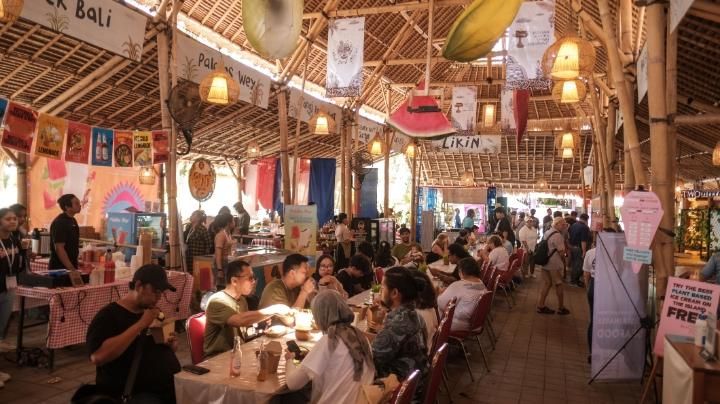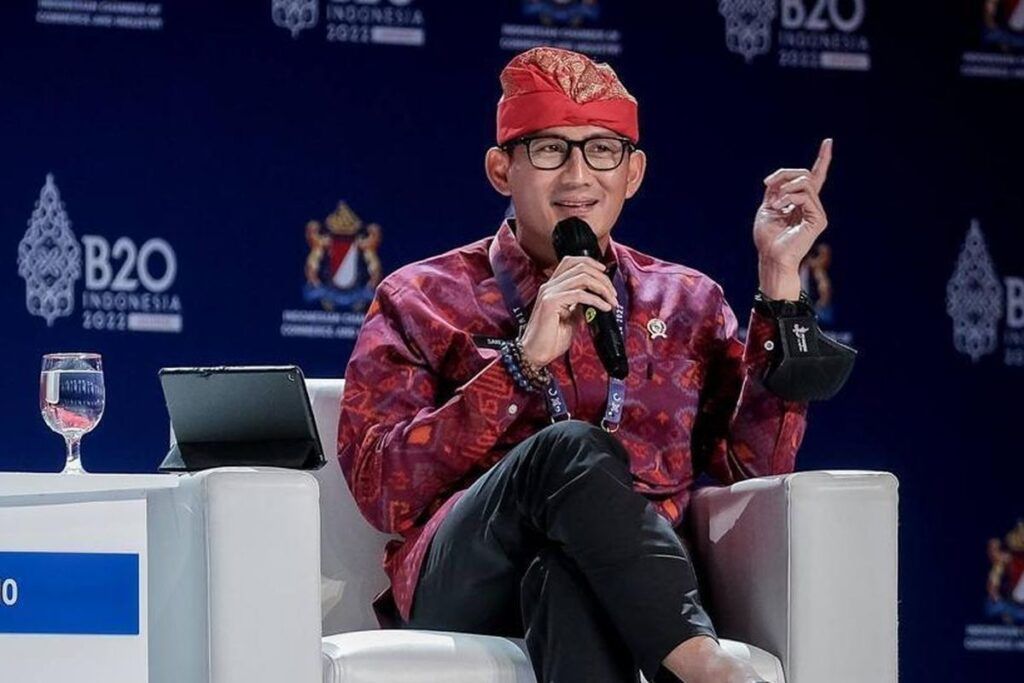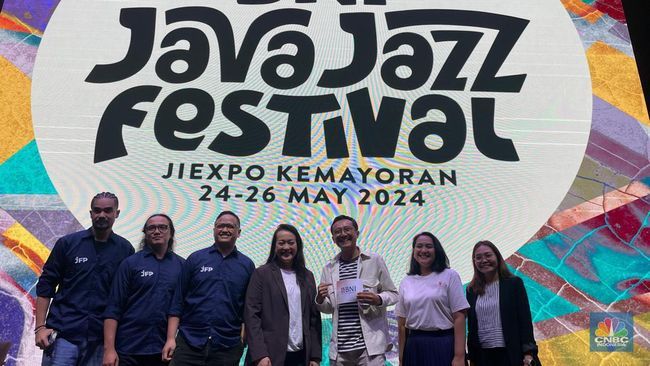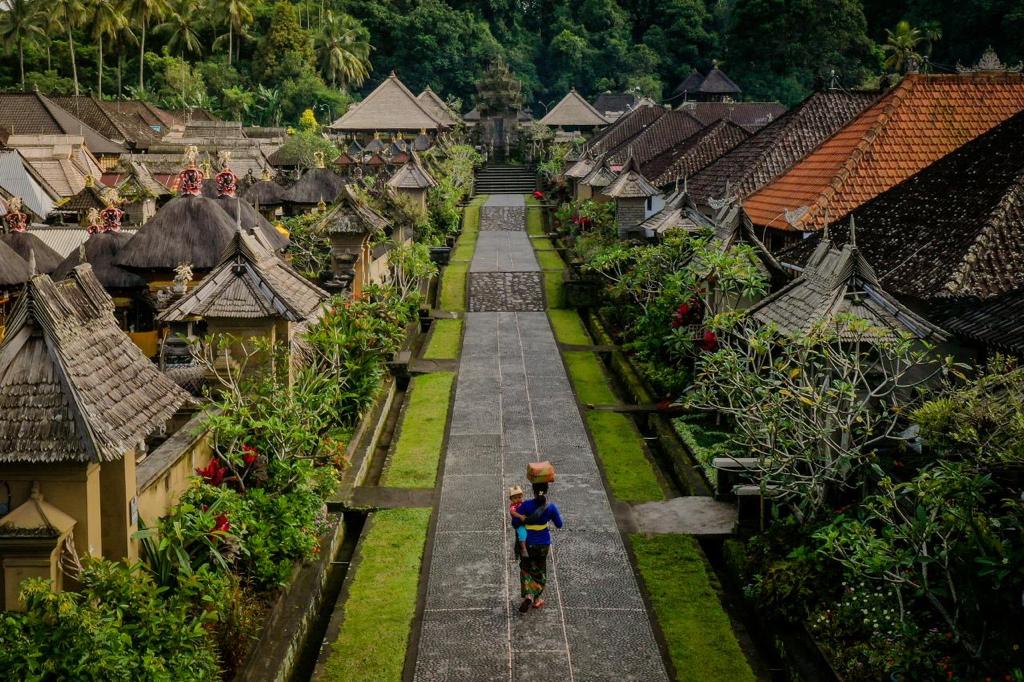
Bali, June 4 – Tumpek Wayang
Tumpek Wayang is a special day for blessings dedicated to the traditional theater art of shadow puppetry. Various offerings are made to the equipment and puppets. Tumpek Wayang is one of a series of Tumpek days for blessing different subjects. The others are Tumpek Kandang for cattle and livestock, Tumpek Uduh for plants, Tumpek Landep for metal objects and tools, Tumpek Kuningan for ancestral spirits, and Tumpek Krulut for traditional gamelan music instruments – all of which occur in a 210-day cycle on the Pawukon calendar.
Surakarta, June 10 to 12 – Solo Batik Carnival
A celebration of Indonesian cultural heritage, the Solo Batik Carnival or ‘Karnaval Batik Solo’ is a very colorful annual carnival held in Solo City (Surakarta). The main attraction of this event is its street parade of dancers wearing extravagant costumes with batik motifs.
Bali, June 11 to July 9 – Bali Arts Festival
A celebration of art and culture, the Bali Arts Festival – ‘Pesta Kesenian Bali’ – takes place every second Saturday of June to the second Saturday of July. A variety of traditional and contemporary dances, shadow puppetry, music compositions and youth competitions are presented in auditoriums, and on open stages and outdoor pavilions. Most of the exhibitions and art performances are held at the Taman Werdhi Budaya Arts Centre in Denpasar. This colorful festival is the perfect time to see Bali’s wealth of performing arts along with various cultural highlights from other islands in Indonesia.
Papua, June 19 to 23 – Lake Sentani Festival
Sentani lake festival is a four-day event that brings together all the indigenous groups of Papua in a colorful celebration of culture and tradition. Held at Khalkote, East Sentani, the festival is a grand event with music, dancing, cultural parades, exhibitions, boat races, local craft fairs and food. One of the highlights of the festival is Isolo, a typical war dance performed on a boat on the lake.
Bali, June 25 – Perang Pandan Duels or ‘Mekare-Kare’
The age-old traditions of Tenganan in Karangasem, East Bali, include the ritual blood sport called ‘Perang Pandan’ or ‘thorny pandan-leaf battles’. Perang Pandan is a mass coming-of-age ritual dedicated to Indra, the Hindu god of war and the sky. The highlight is when bare-breasted male villagers battle each other in a friendly way armed with a small rattan shield in one hand and a tied bunch of thorny pandan leaves in the other. Perang Pandan also takes place in the village of Tenganan Dauh Tukad on July 22.
Bali, June 25 – Saraswati
Celebrated on an Umanis Watugunung Saturday in the Balinese 210-day Pawukon calendar, Saraswati is devoted to Dewi Saraswati, the Goddess of Knowledge, Art and Literature. On this day, books of knowledge, manuscripts and the Vedas are blessed and special offerings are made together with aspirations for knowledge and wisdom. The day is the first in a series of five important religious celebrations.
Bali, June 26 – Banyu Pinaruh
Banyu Pinaruh follows Saraswati and falls on a Paing Sinta Sunday in the Balinese Pawukon calendar. In the morning, Balinese Hindus head to the beach for a day of family leisure and for cleansing and purification purposes.
Bali, June 27 – Soma Ribek
Soma Ribek falls on a Pon Sinta Monday on the Pawukon calendar and basically means ‘rich Monday’. As Balinese culture is very much based on agriculture, the day signifies blessings for prosperity in the form of full harvests that fill the rice barns, thereby symbolizing affluence and sustenance.
Bali, June 28 – Sabuh Mas
Sabuh Mas is dedicated to precious stones and metals. Various rituals include the cleansing and blessings these items of wealth. On this day the Balinese express their gratitude towards the Divinity for their worldly riches and remind themselves that fate will eventually separate them from their wealth. The day falls on a Wage Sinta Tuesday on the Balinese Pawukon calendar
Bali, June 29 – Pagerwesi
Pagerwesi is the last day in the ‘wealth’ series of celebrations and signifies spiritual reinforcement. Its name roughly translates to ‘iron fence’ in English, meaning that anything of high importance, including the soul and spirituality, should be protected from destructive influences.
Bali, July 9 – Tumpek Landep
Tumpek Landep is a holy day dedicated to the blessing of metal items toward their better use in daily life. The items to be blessed range from heirloom keris daggers to various other metal objects, including machinery, cars and motorcycles. On this day cars and motorcycles are decorated with intricate stitched-leaf ornaments called ‘sampian’.
Bali, July 21 to 23 – Ombak Bali International Surf Film Festival
Ombak Bali takes place on the shore of La Plancha in Seminyak, presenting three days of outdoor surf film screenings, music and art. Ombak Bali is a platform for surf filmmakers to promote their work, and aims to promote awareness of social issues and the environment by screening inspirational surf films.
Bali, July 25 to 31 – Bali International Choir Festival 2016
The annual choir symposium and competition event is organized by the Bandung Choral Society. More than one hundred choir and several conductors are expected to participate in this event which will include a series of choir symposiums and competitions.
Bali, July to November – Makepung Bullock Races
Bull racing is a long-standing tradition in the town of Jembrana, West Bali. Hundreds of pairs of buffaloes are teamed up with their jockeys riding traditional wooden plows that are slightly modified for the competition. This annual festival usually starts in July with various heats around the coastal race tracks of Jembrana, leading up to the finals, the Jembrana Regent’s Cup in mid-November. During the festivities various local art forms are also staged, such as Jegog bamboo orchestra and bull fashion shows.
Bali, July to October – The Bali Annual Kite Festival 2016
The Bali Kite Festival is an annual event in Bali where the art of kite making and piloting is held in high regard. The event is also enjoyed by international visitors as it provides rare opportunities to see truly gigantic kites built with traditional and contemporary designs. Taking place over various dates, the festival generally starts with the onset of the windy season, usually at the end of June. A competition is also held for ‘new creation’ kites, which may include three-dimensional figures and unusual designs, from Hindu gods, cars and motorbikes to mascots and brand sponsors. A gamelan orchestra accompanies each kite-flying troupe, adding to the playful





